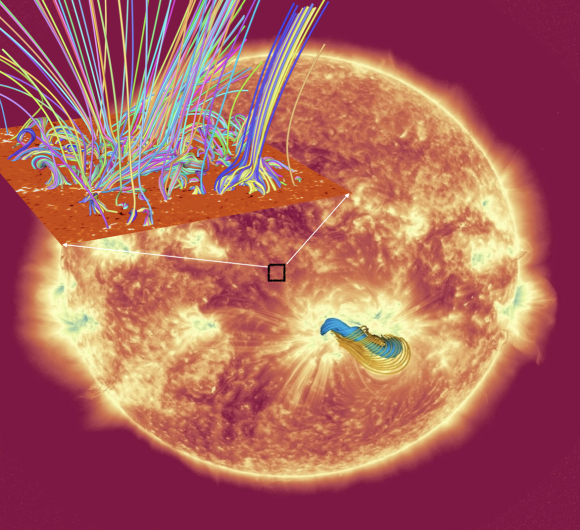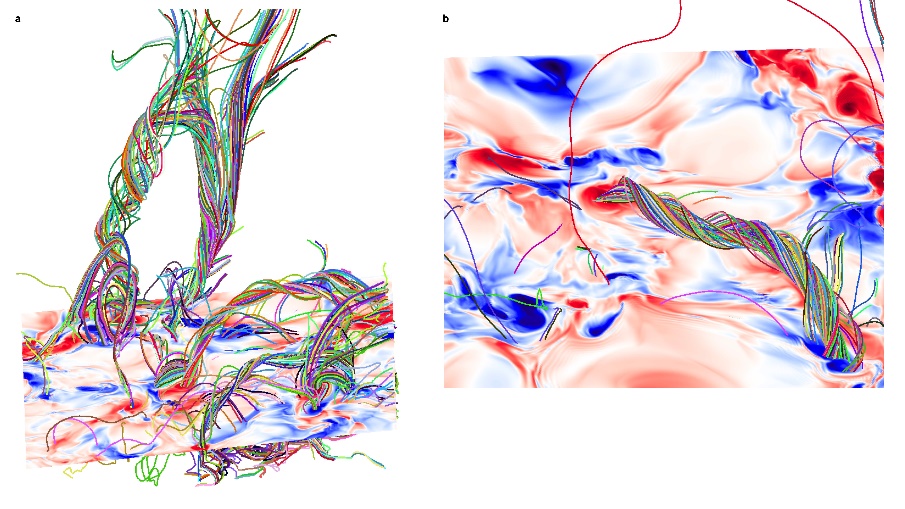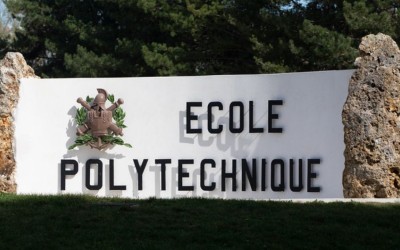- Home
- Press Room
- Press Releases
- Twisted Flux Ropes As The Key To Solar Flares and Atmospheric Heating
Twisted flux ropes as the key to solar flares and atmospheric heating

FRANCE –A study published in The Astrophysical Journal Letters by an international team* coordinated by Tahar Amari, CNRS research director at the Center for Theoretical Physics (CPHT**) at École Polytechnique, shows that twisted flux ropes (TFRs) are omnipresent in the Sun, even in its quietest regions. Their work, combining high-resolution observations and advanced simulations, explains how those TFRs help to heat the solar atmosphere to extreme temperatures.
The study published in The Astrophysical Journal Letters by the team led by Tahar Amari, CNRS research director at École Polytechnique's CPHT, is a new episode in the scientific series seeking to understand which magnetic structures provide the energy necessary for the Sun's eruptive phenomena. The Sun is in fact made up of plasma that is subject to convection movements, like those of boiling water. These movements of electric fluid inside the star create complex magnetic fields, including ‘twisted flux ropes’ that rise well above the surface. This new work helps to answer one of the great enigmas of our star: how its atmosphere can reach temperatures of more than a million degrees while its surface does not exceed 6,000 degrees.
This study confirms a prediction, made in 2015 in the journal Nature, which was based on numerical simulations. In this now study, in addition to the simulations, high-resolution observations of the Sun's surface by the Hinode satellite are combined with advanced environment reconstruction models which have made these structures visible for the first time and have revealed a multitude of magnetic twists on small and medium scales.
Previously, Tahar Amari and his colleagues had shown the role of magnetic ‘ropes’ and magnetic ‘cages’ in the different types of solar eruptions in the so-called active regions of the Sun. The new results, combined with new high-resolution numerical simulations, show that those structures are also omnipresent, on smaller scales, within the ‘quiet’ Sun. The 2015 prediction has been validated by going even further.
Despite its name, the quiet Sun is incredibly dynamic. Observed by Solar Orbiter, it releases small amounts of energy, such as spicules, jets or ‘campfires’.

TFRs in the quiet Sun, produced before and during an eruption, revealed by a high-resolution simulation including the thin layer beneath the solar surface. © Tahar Amari et al. / Centre de physique théorique (CNRS/École Polytechnique, IPP)
“We have shown that these quiet solar ropes appear at the same altitude as these campfires and contain the energy needed to power them. What's more, unlike what happens in active solar regions, these magnetic structures in quiet regions can connect to larger magnetic loops that relay energy even higher up in the Sun's atmosphere, via so-called Alfven waves”, Tahar Amari points out.
Those ropes not only contribute to this localised heating: they also generate small eruptions, which may be less violent than those in active regions, but which also transport energy and contribute to the heating of the solar atmosphere.
Magnetic ropes could therefore constitute a very important part of the energy chain between the Sun's surface and its upper atmosphere, and provide a unified view of the eruptive processes in the active and quiescent regions of our star. For scientists, the story goes on, as ongoing observations by Solar Orbiter and the DKIST telescope will provide new data.
*The international collaboration brought together researchers from the CNRS, École Polytechnique, the University of California at Los Angeles (UCLA), the Predictive Science Incorporation (San Diego), Inria, the Institut d'Astrophysique Spatiale (IAS), the CEA and the National Solar Observatory (Hawaii).
** CPHT: a joint research unit CNRS, École Polytechnique - Institut Polytechnique de Paris
Article: The Ubiquity of Twisted Flux Ropes in the Quiet Sun, Tahar Amari et al., The Astrophysical Journal Letters, March 2025: DOI 10.3847/2041-8213/adb74f
See also


 Support l'X
Support l'X 